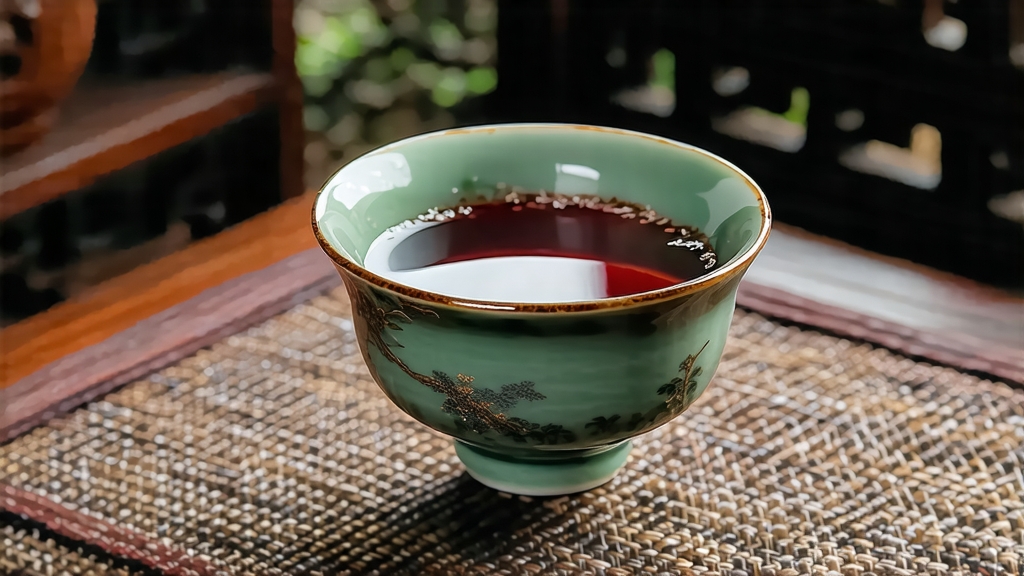
When Chinese tea lovers speak in reverent tones of “rock rhyme”—the elusive mineral melody that lingers after swallowing—they are almost always talking about Da Hong Pao, the great crimson robe from the Wuyi Mountains of northern Fujian. To understand this oolong is to step into a landscape of vertical cliffs, Taoist monasteries, and Song-dynasty stone paths where mule trains once carried tea that could buy more than its weight in gold. Da Hong Pao is not simply a cultivar; it is a cultural epic compressed into a twisted, charcoal-black leaf.
Origin myth and imperial favor
Legend fixes the birth of Da Hong Pao in the late Ming dynasty. A passing scholar, en route to the capital for imperial examinations, fell ill on the steep Wuyi trails. Monks from the Tianxin Temple brewed leaves picked from bushes growing out of a narrow fissure in Jiulongke, the Nine-Dragon Cliff. The scholar revived, continued his journey, and returned months later in the crimson robe of a top graduate to thank the bushes by draping his imperial robe over them—hence the name “Big Red Robe.” Whether apocryphal or not, the story illustrates the tea’s early association with restoration and prestige. By the early Qing, Da Hong Pao had become tribute tea; court records of 1725 list “Yan Cha from Wuyi” among gifts reserved for the emperor’s own table.
Terroir: why cliffs matter
The Wuyi range is a 550-million-year-old sandstone massif carved by the Jiuqu (Nine-Bend) River into 36 peaks and 99 valleys. Day-night temperature swings of 15 °C force the tea bush to thicken cell walls, concentrating aromatic oils. The porous rock absorbs daytime heat and releases it after sunset, creating a natural “radiant heater” that extends photosynthesis. Meanwhile, short-wave mountain light refracts off mineral-rich mica, producing more amino acids and catechins than flatland gardens. The resulting liquor carries a distinct “yan yun” (rock rhyme)—a cool, stony echo that arrives after the swallow, like the faint chime of a distant bell.
Mother trees, cuttings, and the genealogy of taste
Only six original “mother trees” still cling to Jiulongke, now protected by the state and no longer harvested. In 2006 the last 20 g of true mother-tree tea was auctioned in Hong Kong for ¥208,000—roughly US $25,000. Today’s market offers three tiers:
- Purebred Qi Dan: clonal offspring of the mother trees propagated by soft-wood cuttings. Genetically identical, these bushes yield the most faithful transcription of mineral depth.
- Bei Dou #1: an early 1960s grafting program that transplanted scions to lower-elevation terraces; slightly softer body, still noble.
- Blended “commodity” Da Hong Pao: a skillful marriage of three or four Wuyi cultivars (often Rou Gui, Shui Xian, and Tie Luo Han) designed to mimic the mother-tree profile at accessible price points. Master blenders treat these like perfumers, using Rou Gui for cinnamon top notes, Shui Xian for orchid mid-palate, and Tie Luo Han for a base of toasted biscuit.
Craft: the sixteen-hour odyssey
Plucking begins at dawn on the third or fourth day after the Qingming festival, when two leaves and a bud are still dewy but the serrated edges have begun to curl. What follows is a sixteen-hour choreography divided into eight stages:
- Wilting: leaves are spread on bamboo trays in direct mountain sun for 20–30 minutes until the edges feel like parchment.
- Indoor withering: trays rest on racks in a drafty corridor for 2–3 hours; enzymatic oxidation kicks in, turning the leaf rim a reddish bronze.
- Shaking: the most athletic step. Leaves are tossed in a rattan drum every hour; bruising ruptures cells, allowing polyphenols to meet oxygen. Masters listen for a rustle that sounds like distant rain on leaves—too loud means over-bruising, too soft means under-oxidation.
- Oxidation: the leaf pile is left to rest 2–4 hours at 24 °C and 75 % humidity. Aroma shifts from